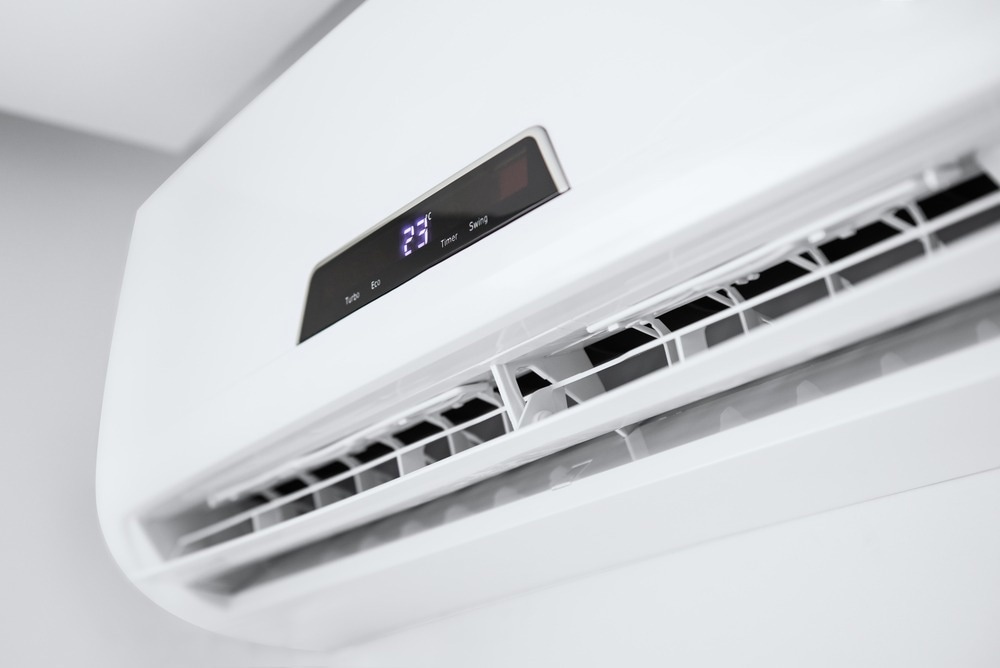The energy created when a substance transitions from a solid, liquid, or gas to another state has been used to generate electricity by scientists at the University of Tokyo. This accomplishment will expand the possibilities of thermocells, which use temperature changes to generate electricity (a process known as thermoelectric conversion).

Image Credit: Wstockstudio/Shutterstock.com
This study supports the notion that a wide range of materials can be used for thermoelectric conversion. Latent heat, previously wasted, could now be used to enable devices to generate their energy while cooling themselves, reducing reliance on other energy sources.
Rising summer temperatures and increased technological use drive demand for cooling systems in the home and industry. Because air conditioning and refrigeration technologies consume a significant amount of energy, meeting this growing demand will be difficult for countries attempting to meet the United Nations’ Sustainable Development Goals.
What if some of the waste produced by these cooling systems can be used to generate the electricity required to power them in a low-cost, low-carbon manner?
The ability of latent heat energy generated when a substance phase transitions from one state to another, such as when the water inside an air conditioner evaporates and condenses to generate the cooling effect, piqued the interest of scientists at the University of Tokyo. Unlike the hot air that an air conditioner blows outside, the latent heat produced by the water inside is almost undetectable. The thermocell is one device that can perform thermoelectric conversion, which uses heat to generate electricity.
The team developed their thermocell by modifying a hydrogel—a water-rich polymer material—called PNIPAM with viologen. This altered hydrogel contained a thermo-responsive polymer, which reacted to temperature change by becoming soluble in cool water but insoluble in hot water. They were able to generate electricity using the very small amount of latent heat energy produced by the phase transition—between soluble and insoluble—using this thermocell.
For the first time, we’ve confirmed that latent heat has the potential to be used for thermoelectric conversion. We believe we can use various kinds of materials for thermocells. Every substance in the world can phase transition under the right conditions: for example, cream into ice-cream, sand into glass, water into steam, etc. With this method, in principle, it is possible to extract electrical energy from even the slightest temperature difference, greatly increasing the number of situations in which thermoelectric conversion can be used.
Teppei Yamada, Professor, Department of Chemistry, Graduate School of Science, University of Tokyo
The Seebeck coefficient, which measures how much voltage a thermocell can generate from a small temperature difference, is used to evaluate its performance. The greater the Seebeck coefficient, the greater the amount of electrical energy that can be extracted. The Seebeck coefficient of organic compound thermocells is typically less than one microvolt (one millionth of a volt) per kelvin unit of temperature, but in this test, it crossed 2 microvolts per kelvin.
This is a remarkable achievement. Although we have previously created thermocells which produce 2 microvolts per kelvin by using a change in pH, this is the first time that the energy from a phase transition was directly used.
Teppei Yamada, Professor, Department of Chemistry, Graduate School of Science, University of Tokyo
The scientists expect that their work will aid in advancing refrigeration technology, temperature management devices, and other technologies such as temperature sensors.
We have already reached the stage where we can consider practical applications of thermocells. For example, we expect it would be possible to generate electricity while cooling a server room or the engine of a car. The real challenge now is that this technology is not well known, so we need industry, government, and academia to work together to achieve rapid social implementation.
Teppei Yamada, Professor, Department of Chemistry, Graduate School of Science, University of Tokyo
Journal Reference:
Zhou, H., et al. (2023). Direct Conversion of Phase‐Transition Entropy into Electrochemical Thermopower and Peltier Effect. Advanced Materials. doi.org/10.1002/adma.202303341.